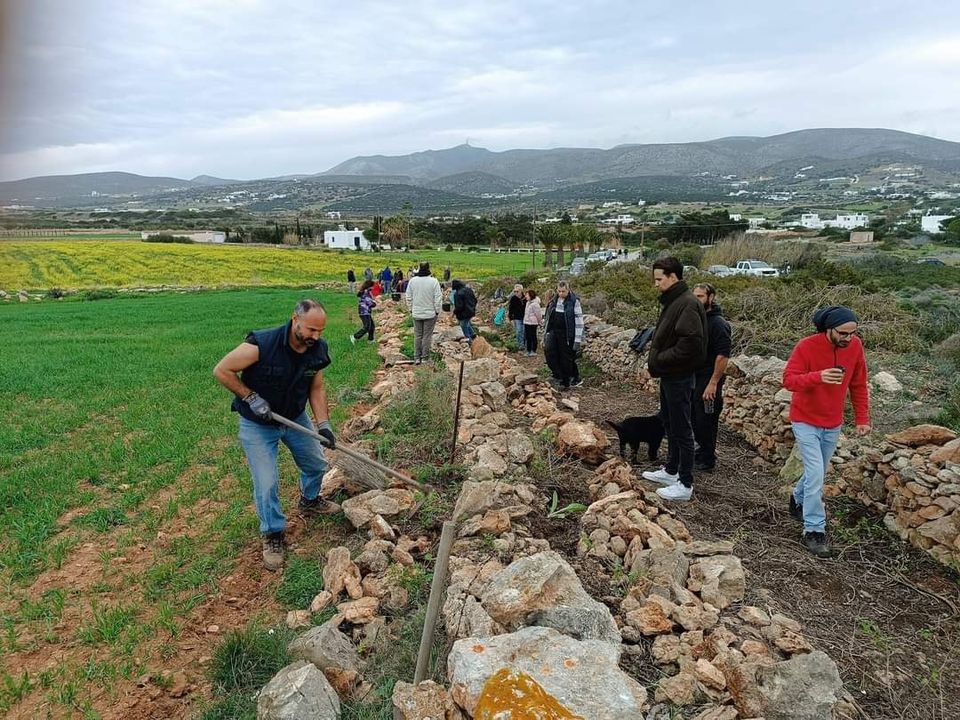
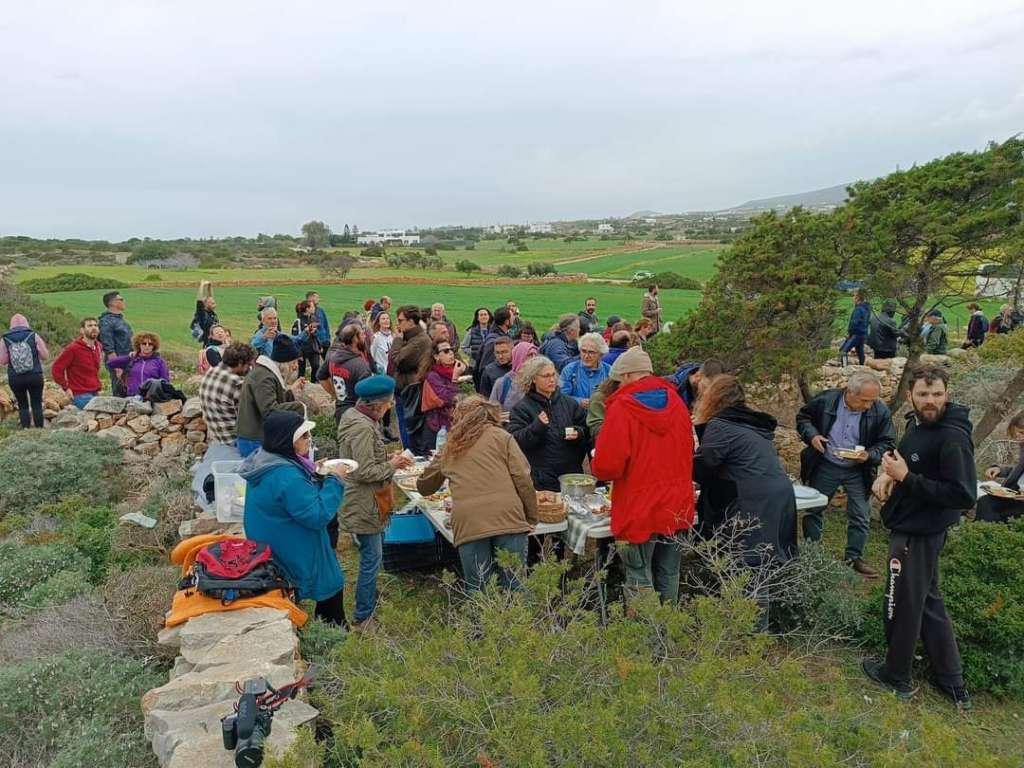
Dry stone (Xerolithia), or dry masonry, is building with pure stone, without any other bonding agent, neither earth nor cement of course. Xerolithies or Pezoules are low walls built with the technique of dry-stone masonry, which characterise the landscape of the Cyclades, from the height of the sea to the high slopes of the mountains.
Built by those who lived in this place, with much effort and much knowledge, for thousands of years, the humble dry stone walls are the ones that gave previous generations the opportunity to live and feed on our arid and barren islands. The dry stone walls and the soil terraces they create are the way to create, maintain, and expand farmland where large fertile plains are scarce, and the soils are sloping and poor.
The dry stone walls held back the soil that the rain brought down, allowing water to pass between the stones. This created flat surfaces suitable for cultivation, which provided the islanders with space to grow their cereals, vines and olives. At the same time, by retaining and draining the water, they helped to recharge the natural underground water reservoirs.
In 2018, Unesco recognized the art of dry stone as a monument to the world’s intangible cultural heritage. This is to say that a human work of high culture deserves to be preserved, displayed, and researched only as a monument, i.e. as something that reminds and explains the past.
But only as a monument? Only as something about the past? No. The dry stone walls are just as much about the islands’ future. Without the dry stone walls, slowly but surely, the morphology of our islands will change dramatically. With every rainfall, masses of soil will slump downwards; the current fields will disappear, slopes will acquire inhospitable gradients and erosion on the higher parts of mountains and hills will reduce the resistance currently provided by wild vegetation and turn more and more ridges into rocky outcrops. The LIFE TERRACESCAPE project[1] was based on their potential to function as a green infrastructure capable of protecting against the climate crisis.
The dry stone walls have not been maintained for several decades. Their natural defenders, farmers and stockbreeders, have become scarce. Farming and caring for the land has given way to aggressive building. The infinite measures of retaining walls or enclosures built around modern buildings have nothing to do with the function of dry stone. The dry-stone craftsmen are disappearing – few are left to know the art. Unless the organised state intervenes, the course is clear and sad: In a very few years, dry stone will not exist, and the unfortunate effects of their absence will be perfectly visible but no longer reversible. What has been achieved by centuries of human sweat and knowledge, once lost, can no longer be either reconstructed or replenished.
In the last decade, sensitised people in the Cyclades, trying to draw attention to the value and the need to preserve the art of dry stone and the monumental value and the irreplaceable position of the dry stone structures themselves in the Cycladic landscape, organise “Dry Stone Workshops” that usually include information activities on the subject and repairs of pieces of dry stone structures. Such workshops have already been held in Andros, Amorgos and Sifnos. The first such workshop in Paros was organised in the area of Aliki on 10 and 11 February, on the initiative of the Cultural Association of Ageria and the Cultural Association of Paros “Archilochos”.
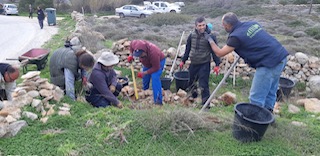
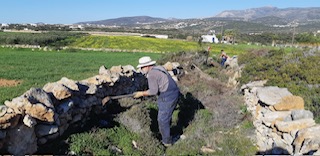
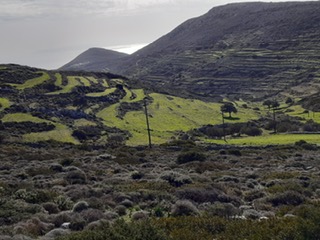
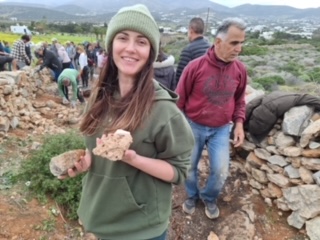
The 1ο Dry-stone Workshop in Paros relied exclusively on the voluntary work offered by sensitive citizens and people of the island, who rushed to support the action, as well as on two young experts, Yannis Chatzopoulos and Yorgos Anousakis, who undertook to present to the people who filled the hall of the Cultural Association of Ageria valuable secrets of Parian nature, as they themselves have come to know them, not only through their circular studies but mainly through their continuous and active exploration of the magical secrets of the Parian nature and their practical interest in its protection and preservation.
Another happy moment was the presence of Simeli Drymoniti, one of the three key members of the Mitato of Amorgos. With funding from the Ministry of Culture, she has already organised two important, multi-day dry stone workshops in Amorgos. Simeli spoke about her own experience of nature and Mitato’s activities in Amorgos and highlighted, among other things, the important link between dry stone structures and addressing the common Cycladic need for sufficient water resources.
The Workshop effortlessly won the hearts of the people, who not only enjoyed the presentations of the speakers and the spontaneous observations of the older people who have experienced dry stone as an integral part of their everyday life but also participated in the building and the country fete of the next day, some as “craftsmen”, some as “helpers”, others as a “support group” that took care of the snacks and music. And so, this weekend not only highlighted the value of dry stone. It showed that those old ways of supporting human bonds by combining necessary work with simple, hearty fun continue to have the same value they have always had. Just like our dry stone walls, after all. This was evident in the smiles of everyone who took part and was captured by Parian director Panos Kekas in his short film for the 1st Dry Stone Workshop. All those who experienced the weekend want it to be repeated. And it must be repeated. Not once, but many times.
But not as a revival of old practices and memories. But as a modern, vital necessity. Parian society needs to remember its relationship with the landscape – not to save the landscape, but to save itself. For the abandonment and threat to the landscape is the abandonment and threat to island society. The stone’s soul and the island community’s life communicate and support each other. If we preserve one, we preserve the other.
The dry-stone walls and the magical landscape they create will not be saved from above, as evidenced by the fact that since 2012, the General Urban Plan of Paros has prohibited the alteration of the dry-stone walls[2] . Still, they continue to be demolished with ease and without consequences for those who destroy them. Their rescue requires the activation of the islanders. The landscape is one with the people who live in it. It is we who must understand and demand; it is we who must take upon ourselves the life of the stone, just as the stone has taken upon itself our life for centuries in these amazing places, where water and soil have always been lacking, but where light and inorganic simplicity abound, yet which have managed to preserve incredible biodiversity for millennia. This is the message to take away from the Dry-stone workshop in Ageria.
[1] The LIFE TERRACESCAPE project was coordinated by the Department of Geography of the University of the Aegean, which received financial support from the EU and the Green Fund.
[2] General Urban Plan of Paros, p. 56, General Provisions, paragraphs 13 and 14

This is excellent. So you know, as a professional photographer I have been documenting the stone walls and terraces of Paros and many of the other Cycladic Islands for the past 14 years. I use primarily b/w film for this ongoing project as I feel the analog nature of the film corresponds to the analog, hand-made, nature of the walls themselves. As an historical archive I feel my work is indispensable. If you wish to see more, please feel free to contact me anytime. I live full-time in Paroikia.